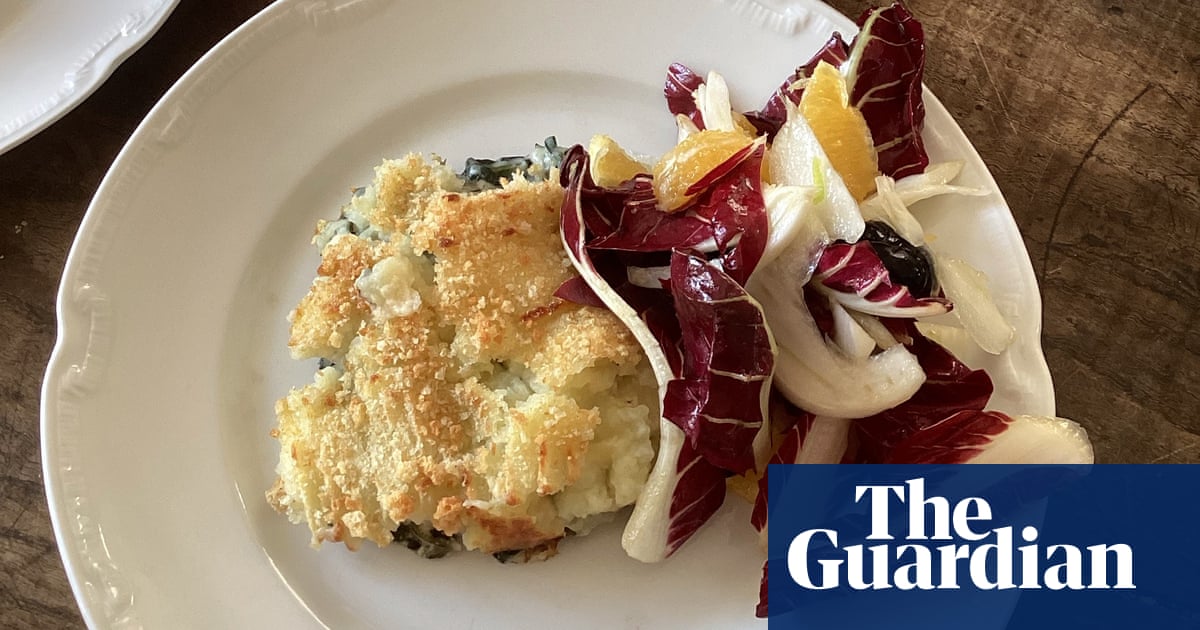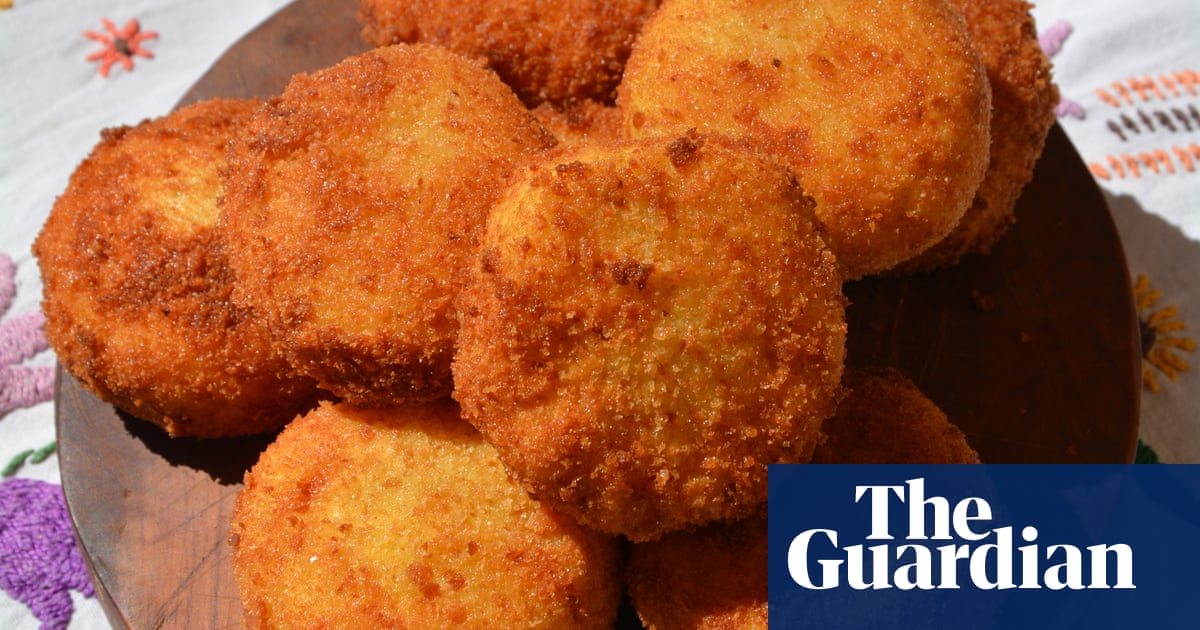
“I didn’t know which type you wanted, so I bought both,” is a wonderful sentence. Vincenzo put two neat, white packets on the counter, along with the bread, crackers and strawberry yoghurt. I love opening cheese – especially blue cheese, the bellowing scent rushing up your nose, fantastic and intrusive. The gorgonzola dolce had stuck to the paper, so it needed to be tasted. The gorgonzola piccante was a celebration of ageing and veins. The dog went nuts.
To make gorgonzola, full fat, pasteurized cow’s milk is heated with rennet. Gorgonzola also requires the addition of lactic ferments, yeast and most importantly, penicillium roqueforti – microscopic mould spores. The heat causes coagulation and the milk separates into whey (which drains away) and curds, which are cut and pressed into cylinders.
Then comes la prima salatura – the first salting – when the forms are immersed in large vats of warm brine for 24 hours. Then there is another pause before the second salting, the length of which depends on the type of gorgonzola being made.
Next comes the ageing room and steel needles. By injecting the cheese with the latter, oxygen is introduced and meets the mould spores. This causes what’s known as the nascita dell’erborinatura – the birth of marbling, natural growth of mould in the form of veins, with their unmistakable and volatile, fruit-metal-ammonia flavour. The enzyme activity also develops the colour, texture and flavour of the cheese generally. Again, the length of time depends on the type of gorgonzola: 50-60 days of ageing produces gorgonzola dolce, which has a soft, soured-cream flavour and just a few light veins; 80 days and beyond, meanwhile, produces the richer, firmer, possibly crumblier and certainly more varicose-veined gorgonzola piccante.
Depending on your taste, you can use either dolce or piccante for potato, pumpkin, sage and gorgonzola, which is inspired by a dish served at a homely and exceptional osteria called Iotto in Campagnano di Roma. You want about 75-100g gorgonzola per person if it is a main dish (for two), and 50g a head if it’s a side dish (to feed four).
Potato, pumpkin, sage and gorgonzola is, I think, a heavenly combination of flavours: four strong ingredients that can’t stop complimenting each other. It is also an easygoing dish, so even though I have given quantities, please adjust the proportions as you like; more potato than pumpkin, the amount of cheese … Though one thing I would encourage you to keep generous is the sage, which is very much an ingredient here, not a garnish. It lends its musty-lemon flavour to the other ingredients and bakes into brittle crisps, a brilliant match for the sweet pumpkin and rich cheese. Sausages, unsurprisingly, go extremely well with this, as do grilled pork chops and roast chicken. I imagine it would work with rice or couscous, too. It also stands alone, as a lovely main course, with a well-dressed green leaf and herb salad, and more cheese after.
Potato, pumpkin, sage and gorgonzola
Prep 10 min
Cook 35 min
Serves 2 as a main, 4 as side
500g pumpkin flesh, cut into 2cm cubes
500g potatoes, peeled and cut into 2cm cubes
16 sage leaves
Olive oil
Salt
150g gorgonzola
Heat the oven to 200C (180C fan)/390F/gas 6. Put the pumpkin, potato and sage in a bowl, add three tablespoons of oil and a good pinch of salt, and toss well.
Put three more tablespoons of oil on a baking tray, then slide into the oven. After about five minutes, once the oil is hot, pull the tray out of the oven and tip in the pumpkin mix. Roast the vegetables, turning them every now and then, for 30 minutes, or until the cubes are golden, crisp at the edges and tender inside.
Tip into a medium-sized ovenproof dish, dot with small lumps of the gorgonzola over the top and return to oven for five minutes, or until the cheese has melted.












